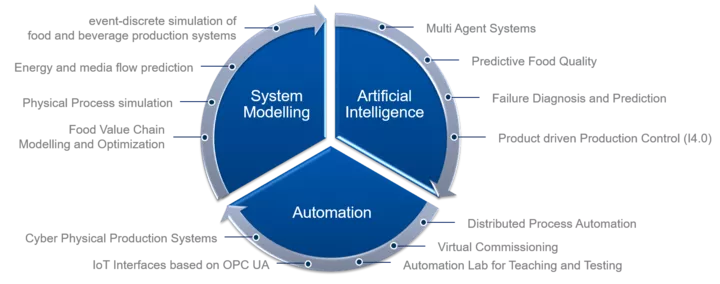Group leader: Dr.-Ing. Tobias Voigt
The Smart Production Systems research group focuses on the digitization of the food and beverage industry through the research areas of artificial intelligence, multi-agent systems, modeling and simulation, and standardized data and communication interfaces. Particular attention is paid to the scientific consideration of issues that support the individual industries in solving current or future challenges. For example, the provision of individualised products of the beverage industry by a decentralized control system as well as the flexible composition of the required machines is solved with the help of multi-agent systems. Through the application of artificial intelligence, processes are to be optimized and made more efficient across industries with the interaction of standardized collected data. The simulation of various systems in the food and beverage industry aims on the one hand to increase energy and media efficiency, and on the other hand to enable virtual commissioning of process plants using simulation models.
The comprehensive research fields are specifically implemented in teaching and conveyed to students. In addition, the working group "Intelligend Production Systems" has many years of experience in the field of machine interfaces as well as a broadly based competence in consulting and services in the field of beverage filling.
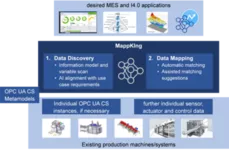
The aim of the joint and development project MappKIng is to use the example of the beverage and food industry to systematically design AI tools for the automated mapping of the available data space of a machine or plant (data supplier) with desired software tools, e. g. for asset management, condition monitoring, predictive maintenance, intelligent worker assitance or the typical MES connection, and to test them in a realistic prototype.
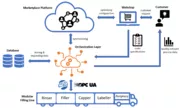
The aim of the VersiPack project is to create a novel, adaptable system concept for beverage filling. Development, analysis and evaluation are carried out on the basis of modules that can be used flexibly and independently of location and a technology platform based on the Internet of Things (IoT). This will open up nex business models, particularly for the beverage and supplier industry and especially for small and medium-sized breweries.
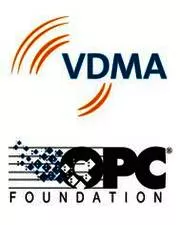
The goal of the project "Creation of an OPC UA Companion Specification for a substitutional migration of the Weihenstephan standards" is to offer an alternative using OPC UA in addition to the already existing Weihenstephan protocol.
This communication interface should enable machine builders to implement an interface with a uniform information model according to the service- and object-oriented OPC UA standard in a uniform, cost-effective way. The information model should provide an extensible basis for future IoT- M2M and cloud applications.
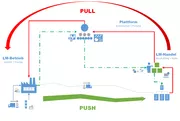
REIF pursues the identification of potentials and conceptualisation of innovative approaches based on AI for learning value-added networks. The value creation development of the food supply chain has coordinative problems that can only be overcome by disruptive approaches such as the use of artificial intelligence. The focus is on the active use of procedures analogous to machine learning and multi-agent systems, through the application of which knowledge is continuously generated and processes are optimised with this knowledge base in order to reduce food waste.
You can find more information here.
vIvA - Real-time 3D-fluid and process simulation of mixing, thermal, filtration and pipe flow processes for the aim of virtual commissioning
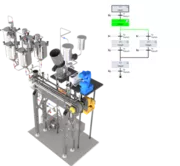
The virtual commissioning enables the automation system to be secured early on a simulation model. However, currently available simulation models only allow the simulation of solids, which means that process engineering systems can only be mapped insufficiently. The research project therefore aims to enable realistic, real-time 3D flow simulation for virtual commissioning. For the first time, it should also be possible to simulate the processing of liquids relevant to control technology in a 3D model.
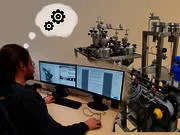
With the construction of a virtual demonstration system, on which the students can learn and deepen the engineering, automation and the operation of beverage, food and bioprocess technology production systems in a practical and time- and location-independent manner, digitization is carried directly into teaching. By integrating process engineering models, the system behaves in the same way as the real system. Supported by a digital exercise and teaching concept as well as high-performance server solutions, the students are enabled to work independently on the virtual system.
BarriFlex - Enhanced Performance of Flexible Plastic Materials by Innovative Nanotechnologies for Food Packaging and Technical Applications
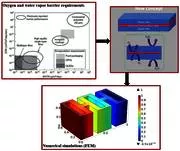
To protect sensitive food and flexible electronic components against oxygen and water vapor, novel polymer-based nanocomposite layers are developed in the BarriFlex project. The task of BGT in BarriFlex is the theoretical study and calculation of the mass transport in the developed layers. The project is funded by the AiF as part of the CORNET program and coordinated by the Research Institute for Leather and Plastic Sheeting. Further project partners are the Fraunhofer Institute for Process Engineering and Packaging, Celabor and Materia Nova.
Contact
Aim of the BFS sponsored project MiPAq is the thorough characterization of microparticles in the aquatic environment and in food. Several chairs of studies work on this project; in the center of our work lies the research of sorption mechanics of various contaminants on plastic particles. For this purpose, several plastics are contaminated with various pollutants to extract them after certain times and determine the amount of substance absorbed into the polymers using mass spectrometry. This way sorption coefficients can be calculated and propositions regarding the intake ability of polymers can be made. Furthermore, we produce microplastic particles for further research ourselves and characterize them.
You can find further information here.
Contact
Development of a non-destructive optical detection method for the individualised evaluation of meat spoilage in inert gas packaging with CO2 and O2
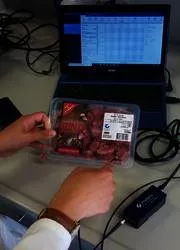
The modified gas atmosphere of packaged fresh meat changes due to the growth of microorganisms during storage. In order to determine the gas non-destructively in the packaging, appropriate methods and packaging systems are being developed which allow an individualized evaluation of the best before date. On one hand, a sensor based on the principle of fluorescence quenching is integrated into a packaging system (O2 determination) and on the other hand CO2 is determined by IR spectroscopy. This should lead to a reduction of the avoidable amount of wasted and spoiled meat.
Contact
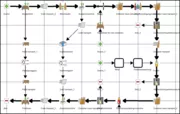
In the research project, a modelling and simulation tool for the beverage industry is being developed, which will enable a standardised holistic analysis of the energy and media consumption of process chains as well as a forecast of energy and media requirements of sub-processes, process stages and operations.
You can find more information here.
In addition to providing and developing an adaptable and flexibly expandable filling and material flow concept, the focus is on a decentralized control concept that orchestrates the intelligent components of the filling system. A virtual representation in the cloud is used to synchronize customer requests, production orders and the associated production planning and control. In doing so, the decentralized intelligence of the individual system components (e.g. utilization status of a filling module) is used and taken into account in the situational design of the process flow. The product to be manufactured steers itself independently and intelligently through the filling process, so to speak. This allows the representation of the plant components independent of time and place. Compared to rigidly assembled and controlled lines in the filling and beverage industry, this project aims to create highly flexible processing stations that are intelligently controlled by the product.
You can find more information on the RoboFill 4.0 Homepage.
Contact
